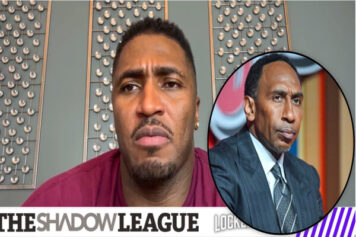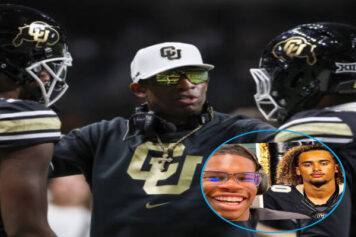There once was a golden age of this too.
It’s funny how golden ages of cultures work. How one golden age manifests another and gives it the ability to co-exist, then exist on its own. It is pretty universally known/agreed/understood that 1988-1994 (give or take or extend a year or two) was the golden age of hip-hop. Somewhere between BDP’s release of “My Philosophy” and Nas dropping Illmatic, America changed because of and due to the music being created by the “ni**as (it) loved to hate.”
And it was the documentation of that era that spawned a literary period so renaissance that “platinum” became the more accurate description of this era of hip-hop journalism.
From Harry Allen’s “Soul Power” masterpiece in Spin (circa: 1987) on the arrival of Eric B. and Rakim to Rob Marriott’s immortal definition of the culture in the preview issue of XXL (circa: 1996), the raising of the literary bar (and the redefinition of urban journalism) of the post-Nelson George soul culture gave America’s new soul culture a dimension that forced the world — when these stories were read — to take this latest contribution to society very seriously.
When Treach’s over-darkened, arms-crossed, braided-hair, ghetto-bastard image premiered on the cover of Vibe magazine with five pink-lettered sentences overlapping his stare-down in the fall of 1993 nothing was ever the same.
And it was then, 20-years ago, when the words and images of hip hop — not the music — entered its own era. Not saying what The Source (the bible), RapPages, Rap Sheet, egotrip, The Bomb (legendary underground piece in the ATL) and other print mediums like Dance Music Report and Billboard were doing wasn’t serving black culture a greater purpose, but Vibe, from the outset, set out on a mission to do more than just document the culture: they wanted to iconoclast it. (Full disclosure: Shadow League founder Keith Clinkscales was a former executive at Vibe.)
dream hampton. Kevin Powell. Lola Ogunnaike. Marriott. Rob Kenner. Greg Tate. Bonz Malone. When Jonathan Van Meter and Gregory Pitts ran shit, when Russell Simmons ran out. When Da Ghetto was a Communicator, when Chairman was a Mao. When Snoop’s face was dripping with water, when Diddy (then Puffy) posed bent down with his back to the camera and his arms spread open, jeans low with Tim’s on full display, when Big “chill-axed” with Faith in the backseat of a drop top Cadillac, when Ice Cube had a big red question mark in his afro and white America was afraid of him.
When every young black writer and every urban photographer in America was trying to get on Vibe’s staff; trying to make names for themselves and find a place in the movement along with getting a byline in its pages. When we as young journalists knew what we did was going to mean something. When we knew what we were creating was going to have a chance to breathe.
When XXL was created to out-write and out-image Vibe, not outsell it.
Vibe was — during the platinum era of urban journalism — the game’s Vanity Fair. They made other writers at other publications get better. They — for various reasons — gave their writers and photographers room and opportunity to give hip hop culture something more than how it presented itself on the surface. Too $hort wasn’t just a foul-mouth, averaged-skilled, Oakland-obsessed MC; Outkast wasn’t just LaFace Record’s attempt to legitimize their street cred; Cornel West wasn’t just a black professor at Princeton. Vibe’s presentation of hip hop became legendary in its effort and execution of full-servicing their subject matters in ways that no other magazine (outside of maybe MOJO in the UK) or newspaper felt the need to do.
After Vibe told an artist’s story, the New York Times, Washington Post and Los Angeles Times usually followed. With features.
Now, we are at a point where we can legitimately ask: Is there such a thing as true hip hop journalism anymore? Journalism that is geared to advance the culture in print – in the written word, in photography and image – in the way that it once was? To do what Vibe originally did and continued to stand for until the platinum era ended?
This is the real consequence of Vibe officially turning 20. (Note: theirs isn’t a “true” 20-year consecutive run, they shut down after the first 16-year run in June 2009 and came back under new ownership in August 2009.) Not the fact that they’ve lasted so long, but the fact that even if they wanted to, they — along with all of the other chitlin’ circuit publications of that monumental era — can’t do what they used to do.
The game no longer allows it. The editors, writers, photographers and art directors/graphic designers have all moved on and are no longer a part of those franchises. Sold-up (not out) to a large degree. The internet doesn’t cuddle up to long, fleshed-out narratives that challenge readers to find better stories elsewhere. The artists’ backstories are either too shallow, too one-dimensional, too much the same or the music they produce isn’t worth an extra 3000-word, 7-page spread investment.
Add to that the non-subjective fact that artists like 2 Chainz or Future or Tyler, the Creator or Big Sean or Chief Keef or Travis $cott or Lil’ B or or A$AP Rocky or Drake don’t artistically lend their talents to writings that correspond with anything that can be considered golden age-ish.
20 years in this day and age of modern journalism is akin to three lifetimes. And although Vibe is still standing, with the exception of Waxpoetics (which remains relevant to the art of music journalism) and a rare and occasional gem in Spin or on Pitchfork, most publications that cover hip hop and black/urban culture on the regular have all gone left on churning out great music pieces/stories.
It's sad when a better story on Kanye can be found in The Atlantic (“American Mozart”) than in Rolling Stone or XXL. Or in Vibe.
So here’s a toast to what used to be. A toast to Vibe on turning 20 and reminding us of not only the role they played in hip hop’s golden age, but of the command they had in requiring certain segments of society to look at hip hop culture as an art form centered in creative brilliance and not just a disposable form of black American entertainment.
For helping hip-hop keep from becoming the ghetto equivalent of disco or grunge.
If we could only go back. Back to when the last black mecca wasn’t just hip-hop, but what was being written about it.
Or as God’s Son himself put it in “Made You Look,” “ …like we bringing ’88 back.”



